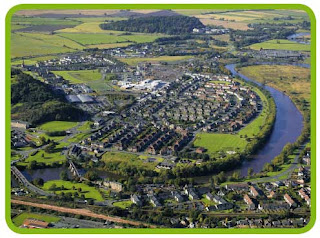It is my opinion that for sustainability to work and become an integral part of how we function as a society, it must start in the communities we call home. Using grassroots movements to create change throughout the community one step at a time. These movements will create the necessary changes allowing community’s time to adapt to the social, environmental and political impacts of becoming sustainable. The problem is there are so many factors that determine every decision amongst various communities which make it difficult to manifest change. Communities must be educated on a multitude of subjects (recycling, 100 mile diet, waste diversion, growing local, green transportation, minimizing pollution, etc.) and this takes time. Many individuals will feel inconvenienced by the added pressures associated with making the changes involved in becoming more sustainable. Not to mention the costs of doing so. This makes it difficult in many communities to implement such change. However, there are multitudes of options that can be undertaken to develop sustainable initiative programs that are cost effective and do not require the bulldozing and re-planning of the entire city.
Before a community or municipality can undertake the task of becoming sustainable, a template must be created outlining the limitations, priorities and intentions of the situation. Once achieved, progress may begin. This step is essential and crucial in the developmental direction of the program. Becoming sustainable doesn’t necessarily mean that overnight the community’s dependence on the outside world must be completely cut off. Although I dream of a society where that is the case, it is hard to imagine that kind of situation throughout most of Canada. I feel that one of the most difficult challenges we face becoming sustainable is the short duration of our growing season, especially out east where I hail from (Go Leafs Go).
Becoming a sustainable community is possible; however it requires the participation of every citizen belonging to that society. A complete overhaul of the thinking and planning processes must be conducted from the ground up. As mentioned in class, communities must begin to think proactively rather than reactively while simultaneously planning to flourish rather than just getting by. Most importantly communities must adapt to the changes of becoming sustainable. This is significant because for communities to become sustainable they must also meet the basic human needs required for survival. Changes in their areas must not hinder any aspects of physical, mental and social well-being. When a community becomes sustainable, it increases the amount of interaction between its citizens. The increase in interaction strengthens the communal participation while bringing the individuals closer to environment.
As noted above, sustainability starts in each individual community. When multiple communities become sustainable throughout a region, the city or the greater area that these communities belong to can only then become sustainable as well. Therefore, the only way for our nation, province, region and city to become sustainable is for our communities to make the necessary changes first. Otherwise, overall sustainability throughout our notable regions and nation will struggle to meet all the needs of both society and the environment resulting in an unwanted situation for both respectively.




No comments:
Post a Comment